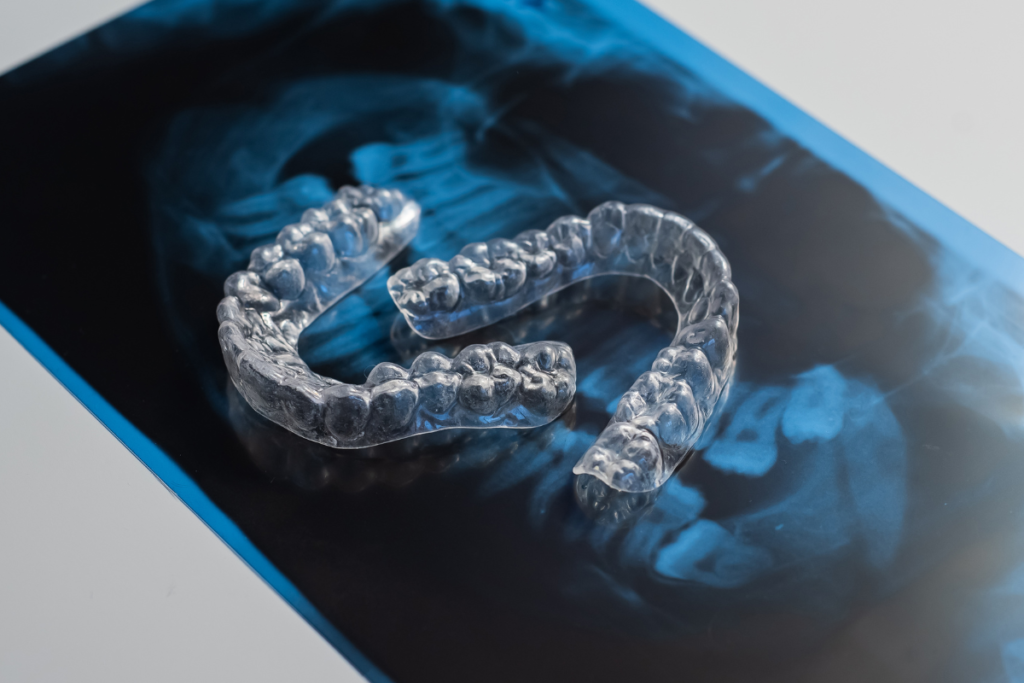Recently, more and more people are opting for clear dental aligners/Invisalign® over regular braces to rectify teeth alignment. This piece covers dental aligners/Invisalign®, from how they work and their effectiveness to their advantages and disadvantages.


Invisalign® is a type of invisible aligner that is commonly used in orthodontic treatment. It was developed by Align Technology in 1998 and is the oldest clear aligner product. Invisalign® is designed using SmartTrack, which is a flexible thermoplastic material.
The Invisalign® clear aligner is designed to avoid drawing much attention as braces would. The American Association of Orthodontists calls it a “less conspicuous” orthodontic treatment method.
While Invisalign® is not entirely invisible, it aligns well with the teeth structure making it hard to notice, unlike traditional braces.
The advantages of using Invisalign® aligners include the following:
There are a few limitations to using Invisalign® aligners, including:
Invisaligners® could also be compromised by hot substances leading to treatment delays and poor outcomes.
Invisalign® can fix dental issues like spacing, moderate bite problems, and crowding of teeth.
The producers of the product claim it can treat these issues:
More research is still being conducted to determine more benefits of clear dental aligners / Invisalign® and their effectiveness.

An individual who wishes to wear Invisalign® aligners visits an orthodontist, and the expert creates a 3-D image of the person’s jaws and mouth. The image guides the orthodontist when deciding how to fix the delta problem.
The health expert customizes the aligners to fit the patient’s situation. Because the aligners apply force on teeth, they will shift to the desired positions.
Depending on the orthodontist’s advice, patients may have to change Algiers every week or after a few weeks. For effectiveness, one should put on the aligners for about 20-22 hours daily.
Invisaligners® have successfully treated various orthodontic conditions, but results from this treatment vary depending on some reasons.
Successful Invisalign® treatment can depend on the severity of the dental issue, the orthodontist’s skill level, and the patient’s compliance.
These aligners have effectively corrected overbites, underbites, overcrowding, and gaps between teeth. Individual treatment results may vary; for example, some patients can get their desired smile a few months after the treatment, while others may take a few years.
To work well, patients must wear Invisalign® aligners for 20-24 hours daily. The aligners should be removed in the following situations:
Proper care is needed when cleaning the aligners; hot water can damage them because they contain plastic material. Such can lead to poorly fitting aligners reducing their effectiveness or even causing them to hurt the patient.
The effectiveness of Invisalign® aligners also depends on the patient’s condition. Complex orthodontic problems like huge gaps between teeth can take longer to treat.
Age and sex can also affect the working of Invisalign® aligners to treat dental conditions.
People willing to acquire Invisalign® aligners should consider the following:
Suppose a parent is considering Invisalign® aligners for their kid(s). In that case, it’s crucial to determine if the kid can properly maintain and take care of the aligners. Kids that often misplace items may need a different option, as they’ll most likely lose the aligners after removing them.
Clear dental aligners / Invisalign® can fix problems like spacing and crowding issues and enhance one’s smile. They suit individuals with moderate conditions who want a less visible treatment alternative.
An individual should consult an orthodontist at Naples Dental Boutique before getting this treatment for an assessment and advice on what would work best for them.